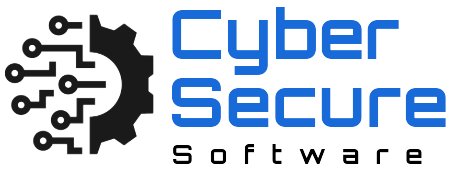What Questions Should You Ask Yourself About Building a New Cyber Secure Software System for Your Business?
Welcome to Cyber Security Solutions, where we prioritize building resilient and secure software to ensure your business thrives. As you venture into creating advanced cybersecurity software, it’s crucial to ask the right questions to safeguard your system from potential threats while aligning it with your strategic goals.
Key Questions to Consider for Building Secure Software:
- 1. What Are the Primary Goals of the Software?
- Before diving into technicalities, it’s essential to define what you want to achieve with your software. Is the focus on improving operational efficiency, enhancing user experience, or optimizing data management? Understanding your software’s core objectives will help direct the development process, ensuring security features are incorporated in alignment with your business needs.<
- 2. Who Are the Intended Users, and What Are Their Requirements?
- Identify who will interact with the software and understand their specific needs. User roles may require varying levels of access, and some may require more stringent security protocols. Knowing these requirements will help design a secure system that meets functional demands while enforcing appropriate access control.
- 3. What Are the Risks and Vulnerabilities of the System?
- Perform a comprehensive risk analysis to identify potential threats and weaknesses in your software. Consider risks such as data breaches, malware attacks, and internal threats. A solid understanding of these risks will guide you in implementing targeted security measures to protect your business.
- 4. What Types of Data Will the Software Handle, and How Will It Be Secured?
- Assess the types of sensitive data your software will manage, such as personal details, financial records, and intellectual property. Incorporate strong encryption, access controls, and secure storage methods to prevent unauthorized access and data breaches.
- 5. Which Regulatory Standards Must the Software Comply With?
- Each industry has distinct regulatory requirements regarding data privacy and security. Ensure your software complies with relevant standards such as GDPR, HIPAA, or PCI-DSS to avoid legal and financial consequences. Address these compliance needs early in the development process.
- 6. How Will User Authentication and Authorization Be Handled?
- 6. How Will User Authentication and Authorization Be Handled?
- Establish strong user authentication and authorization protocols. Consider multi-factor authentication (MFA) and implement role-based access controls to ensure that users only access the necessary data and system features based on their roles.
- 7. What Is the Strategy for Software Updates and Patch Management?
- Cybersecurity threats evolve quickly, so it’s crucial to have a proactive approach to software updates and patching. Set up processes for identifying vulnerabilities, applying patches, and keeping software components updated to counteract emerging security risks.
- 8. How Will Security Incidents Be Monitored and Addressed?
- Develop a plan to actively monitor your software for suspicious activities and potential security breaches. Implement logging and alerting systems to detect anomalies and have a robust incident response strategy in place to mitigate any security events.
- 9. What Are the Plans for Ongoing Maintenance and Support?
- Consider the long-term needs for maintenance and support. Ongoing updates, troubleshooting, and security enhancements are necessary to ensure your software continues to perform optimally and securely. Define your support policies, including response times and issue resolution procedures.
- 10. How Will You Educate Users on Security Best Practices?
- End-user training is a key part of maintaining a secure software environment. Develop comprehensive programs to train users on recognizing security threats, creating strong passwords, and following secure data handling procedures to reduce human errors that could lead to breaches.
- 11. What Is the Allocated Budget and Resource Plan?
- Building and maintaining a secure system requires significant investment. Assess your financial resources and allocate them effectively to cover development, security, ongoing maintenance, and user training to ensure the project’s success.
- 12. How Will the Software Integrate with Existing Systems?
- Plan for how the new software will integrate with your existing systems. Seamless integration minimizes operational disruptions and maximizes the software’s effectiveness. Ensure compatibility with your existing technology to streamline operations and enhance functionality.
Conclusion
Building secure software is a complex yet essential endeavor. By asking these critical questions, you ensure that the system is not only effective and aligned with business objectives but also secure against emerging threats. At Cyber Security Solutions, we are here to guide you every step of the way, helping you create secure, reliable, and efficient software tailored to your business needs.
If you need further guidance or have any questions, don’t hesitate to reach out. We are committed to ensuring your business’s cybersecurity success.
